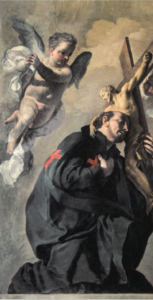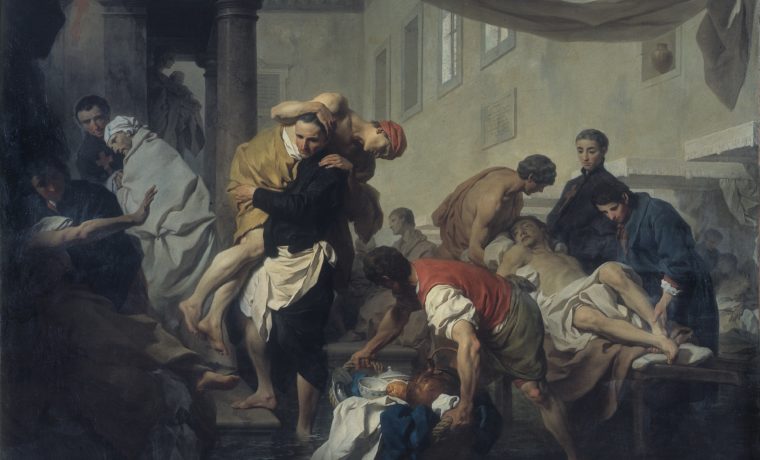 On July 14, every year in the Roman calendar there is the feast of St. Camillus de Lellis, patron of the sick, hospitals and healthcare workers. The personality of the Saint could be summarised in a few words: from mercenary to “servant” of the sick. From childhood – and how dissolute he was – Camillus thought of following the footsteps of his father, joining the royal military of Venice against Turkey, but due to an ulcer on his right foot he was forced to look for gratuitous treatment at St. James hospital of the incurables in Rome, from where he was soon dismissed because of an excessive passion for gambling. Dismissed from military, he was welcomed by Capuchin Friars of Manfredonia as a labourer in exchange for food and accommodation. And here, one day, he was struck down by God’s Grace….
On July 14, every year in the Roman calendar there is the feast of St. Camillus de Lellis, patron of the sick, hospitals and healthcare workers. The personality of the Saint could be summarised in a few words: from mercenary to “servant” of the sick. From childhood – and how dissolute he was – Camillus thought of following the footsteps of his father, joining the royal military of Venice against Turkey, but due to an ulcer on his right foot he was forced to look for gratuitous treatment at St. James hospital of the incurables in Rome, from where he was soon dismissed because of an excessive passion for gambling. Dismissed from military, he was welcomed by Capuchin Friars of Manfredonia as a labourer in exchange for food and accommodation. And here, one day, he was struck down by God’s Grace….
A giant with a heart of gold
Returned a second time to the hospital of incurables, Camillus felt as a blind man who has regained his sight, observing what he had not seen during his first stay there: the sick people not looked after, abandoned people, the dying… Seeing the reality with new eyes, he became a servant of all: “Don’t ask me ‘please’ when you are in need”, he told them, “because you are my lords”. A giant of more than two meters, the physical prowess helped him to be obeyed by other attendants and in a short time the hospital was changed: the windows of the passage were opened, the cleaning made its way, the contagious were isolated and the food was better taken care. Also his life changed: something unpredictable happened, like everything that has to do with the Providence. While continuing to devote himself to the sick, Camillus engaged in studies, was ordained a priest, founded the Order of the Ministers of the Infirm (Camillians) – whose distinctive mark is a red cross on the chest – and he consumed his life at the bedside of the sick. When he died, in 1614, Robert Bellarmine declared that “for his charity, his soul has taken the place among the Seraphim”.
The rescue from the flood
In a painting by the French painter Pierre Subleyras – which represents the scene of the flood of the Tiber, on Christmas night of 1598, in the fifteenth century Sixtine Aisle (willed by Benedict XIV and under construction in those years), the only environment of recovery of the Holy Spirit Hospital in Rome – we see the figure of Camillus with a patient on his shoulders: the “still image” is the idealization of self-denial that characterized the existence of the Saint. In the painting the artist interprets the spirit of Camillus, celebrated by the biographers, the same spirit which after more than one century the artist Van Gogh will realize in his “Good Samaritan”, “athletic figure, flexible like a flame worn out by the wind, giving to the body the shape of the weight of others. And what else is charity if not just this last effort? The eyes of the two protagonists do not cross each other. One is closed by pain, that of Camillus is understood by physical exertion. But the embrace seems like an intimacy built over the years” (Mons. Francesco Beschi, bishop of Bergamo).
From hardness to tenderness
The portrayal of Subleyras is the icon of “Good Samaritan”. “Go, and do likewise”, is the instruction that Jesus gives to his disciple who believes in Him. In Camillus, the conversion is a transformation which describes the passage from hardness to the tenderness of the heart, from fear to love, from the works of mercy to a merciful heart. And the practise of charity is the path on which occurs the transformation from “a heart of stone to a heart of flesh”: the teaching Camillus offers with his merciful love.















Camillians on Facebook
Camillians on Twitter
Camillians on Instagram